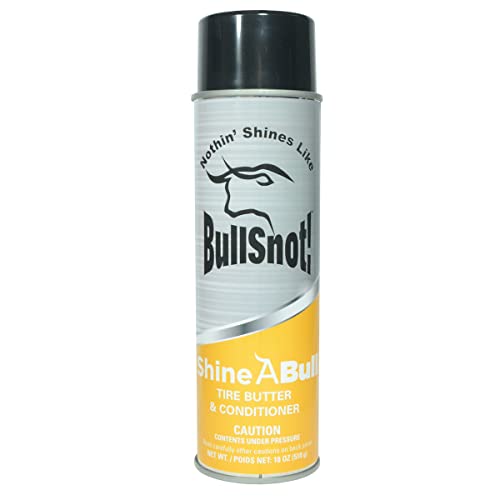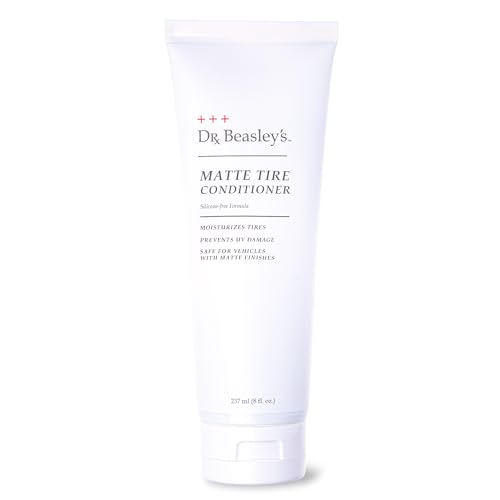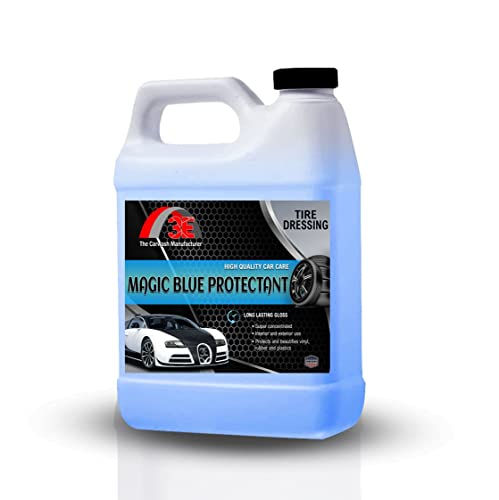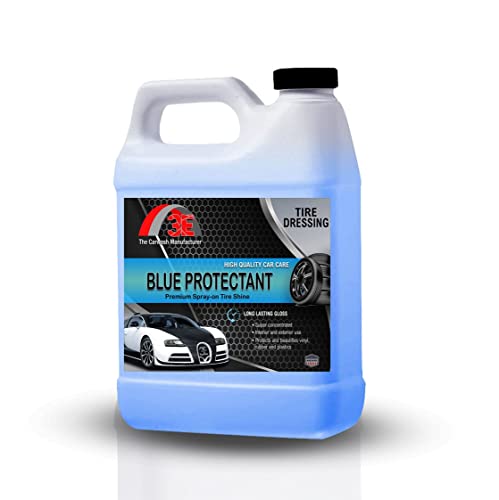Taking care of your tires is important for safety and performance. Over time, tires can suffer from a problem called tire rot, which weakens them and may lead to dangerous driving conditions. In recent time, many car owners have reported issues related to tire degradation due to neglect and harsh weather.
This article will help you understand what tire rot is, how to spot it, and what you can do to prevent it. If you want to avoid unexpected tire problems and maintain smooth rides, this article offers practical advice and real-life examples. Read on to learn more!
READ ALSO: Is Tire Dressing Bad for Tires?
What Is Tire Rot?
Tire rot is a type of deterioration that affects the rubber in your tires. It happens when the tire’s materials break down due to environmental factors like sunlight, moisture, and temperature changes. Over time, this decay weakens the rubber, making it prone to cracking and peeling. Tire rot is often seen as discolored patches, cracks along the sidewalls, or a rough, uneven surface.

Tire rot is similar to the way fruit can spoil if left out too long. Just as a banana turns brown, your tires can deteriorate if not properly maintained. Recognizing tire rot early is important because it can compromise the tire’s strength and, ultimately, your safety on the road.
Causes of Tire Rot
Several factors contribute to tire rot, and understanding these can help you take action.
- Exposure to direct sunlight causes UV rays to break down the chemical bonds in the tire rubber.
- Constant moisture from rain or high humidity also plays a role, as it can lead to oxidation, which further degrades the rubber.
- Extreme temperatures, both hot and cold, accelerate this process.
- Improper Storage: Leaving tires in damp, dark places can worsen rot.
For instance, if you park your car under direct sunlight every day without any shade or cover, your tires are at risk. In areas where the sun is strong and humidity is high, these factors can combine to cause significant tire rot over a few years. Taking simple steps to reduce exposure to these elements can make a big difference in the longevity of your tires.
How to Identify Tire Rot
Spotting tire rot early is essential for maintaining safety and performance. To identify tire rot, look for visible signs such as cracking or peeling of the rubber. These signs might appear as fine lines along the sidewall or patches where the rubber looks dull and rough. Additionally, tire rot may cause uneven surfaces that affect your car’s handling.
Warning Signs:
- Cracks on the Surface: Small, visible cracks indicate degradation.
- Discoloration: Tires may lose their natural black color and appear faded.
- Peeling or Flaking: Bits of rubber may peel off the tire surface.
- Uneven Texture: A rough or bumpy feel when you run your hand over the tire.
Regularly inspect your tires, especially if your car is older or exposed to harsh weather. For example, if you notice that the sidewalls of your tires have started to crack or feel less smooth than before, it may be time to take action. Catching these issues early can prevent more severe damage that might require expensive repairs or premature tire replacement.
READ ALSO: How to Deal With Tire Blowout Safely

Effects of Tire Rot on Performance
Tire rot can have a serious impact on your car’s performance and safety. When tires deteriorate, they lose their flexibility and grip, which affects handling. This can lead to longer stopping distances and poor traction, especially in wet conditions. As a result, your driving experience becomes less safe, and your vehicle may consume more fuel due to increased rolling resistance.
Other effects include:
- Increased Wear: Over time, rot can lead to uneven tire wear.
- Higher Fuel Consumption: Poorly maintained tires can reduce fuel efficiency.
- Handling Problems: You car might feel unstable, especially on corners
For example, consider a scenario where you take a sharp turn on a rainy day. If your tires are affected by rot, the reduced grip can lead to a loss of control, putting you at risk of an accident. Maintaining proper tire health is not just about aesthetics, it directly influences how safely and efficiently your car performs.
READ ALSO: How to Prevent Uneven Tire Wear
Preventive Measures Against Tire Rot
Prevention is key to avoiding the problems associated with tire rot. Below are some preventive tips:
- Park in Shade: Avoid constant exposure to direct sunlight.
- Use Tire Conditioners: Apply products that restore moisture to the rubber.
- Regular Cleaning: Wash your tires to remove dirt and harmful chemicals.
- Maintain Proper Inflation: Properly inflated tires reduce stress on the rubber.
Special tire conditioners are available that restore the natural oils in the rubber, keeping it supple and resistant to cracking. Checkout some below:
For instance, if you regularly use a tire conditioner every few months, it helps maintain the tire’s flexibility and prevents the hardening that leads to cracks. Simple habits like cleaning your tires after a long drive or when they get dirty can prevent contaminants from accelerating the rot process.
READ ALSO: 13 Car Maintenance Secrets Mechanics Won’t Tell You
Proper Storage Practices for Tires
Proper storage is a vital part of preventing tire rot, especially if you have seasonal tires or store your car for extended periods. If you store tires in a garage, ensure the space is dry, cool, and well-ventilated. Avoid stacking tires directly on the floor; instead, use tire racks or pallets to keep them elevated. This minimizes the risk of moisture accumulation and physical damage.
Other Storage Tips:
- Cover Them: Use breathable tire covers to protect against dust and UV rays.
- Avoid Chemicals: Keep tires away from solvents or oils that can damage the rubber.
During the off-season for winter tires, storing them properly in a dedicated tire storage container can extend their lifespan significantly. Following these practices helps ensure that even if the tires are not in regular use, they remain in good condition for future use.
Regular maintenance is essential to catch early signs of tire rot. Establish a routine of inspecting your tires every month. Look for cracks, discoloration, or any changes in texture.
Using a simple checklist can help you keep track of your tire’s condition. Some drivers even use mobile apps to log their maintenance routines. This regular attention makes it easier to spot changes and take preventive measures before problems escalate. With consistent care, you can avoid the pitfalls of tire rot and keep your vehicle performing at its best.
READ ALSO: How Do You Remove Tire Dressing from Tires?
How to Treat Early Signs of Tire Rot
If you notice early signs of tire rot, take action right away. Treatment options depend on the extent of the damage. For minor rot, cleaning the tire thoroughly and applying a tire conditioner might be enough. Tire conditioners are designed to restore the natural oils in the rubber, helping to rejuvenate the tire’s surface.
Steps to Treat Minor Rot:
- Clean the Tire: Use a mild soap solution and a soft brush to remove dirt.
- Dry Thoroughly: Ensure the tire is completely dry before treatment.
- Apply Tire Conditioner: Follow the product instructions to evenly apply the conditioner.
- Buff the Surface: Use a clean cloth to buff the tire, ensuring an even finish.
For more severe cases of rot, it may be necessary to consult with a professional tire specialist. They can assess whether the tire can be repaired or if it needs to be replaced. Taking prompt action not only restores your tire’s appearance but also prevents further deterioration that could compromise safety.
Advanced Methods for Tire Preservation
For those who want to take tire maintenance to the next level, consider advanced preservation methods. One effective technique is using a silicone-based tire protectant. This product not only restores shine but also creates a protective layer that repels water and resists UV damage. Applying a high-quality tire protectant every few months can prevent the onset of rot by keeping the tire rubber flexible and well-hydrated.
Another advanced method is periodic professional cleaning and detailing of your tires. Professional detailers have specialized equipment and products that can remove stubborn contaminants and rejuvenate the tire surface. While this service may cost more, it provides a thorough cleaning that regular maintenance cannot match. It also offers peace of mind knowing that your tires are in excellent condition. Consider scheduling a professional detail every six months to maintain optimal tire health.
READ ALSO: Top 10 Best Car Polishes for Glossy Finishes
Final Thoughts
Taking care of your tires is a key part of vehicle maintenance. Tire rot can reduce performance, safety, and the overall lifespan of your tires. By following the tips and strategies outlined in this guide, you can prevent tire rot and keep your car running smoothly.
Remember, investing a little time in maintaining your tires can save you money and hassle in the long run. Stay proactive with monthly checks and use quality products to protect your tires. With the right care, you can avoid the pitfalls of tire rot and enjoy safe, efficient driving for years to come.






















